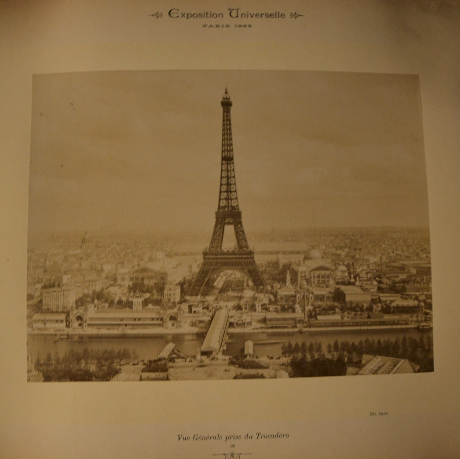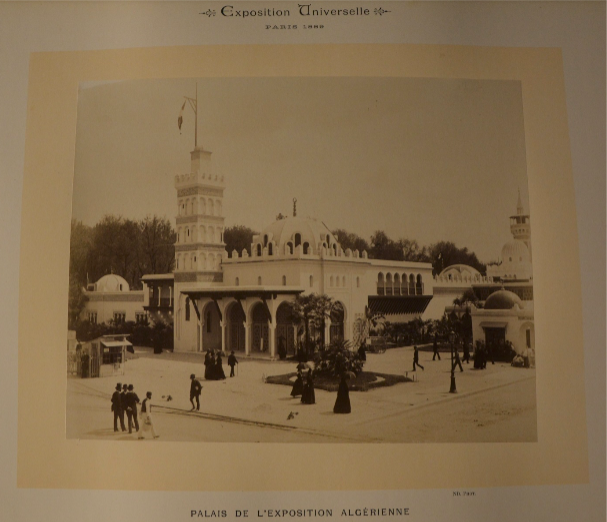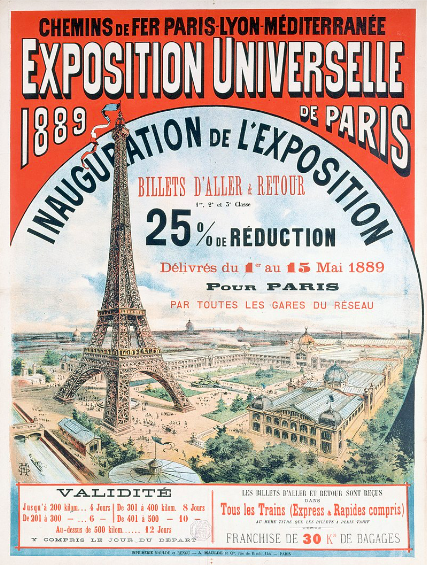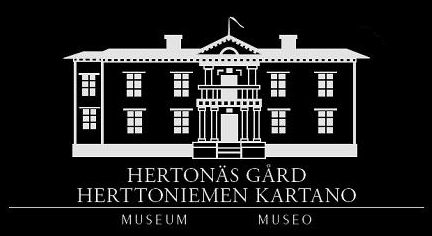Exposition Universelle 1889 was a big event for Paris and France. The year 1889 was an important year for France because it was the same year France celebrated the hundred-year anniversary of the French revolution. The world’s fair was held between the 5 th of May and 6 th of November and over 30 million people visited Paris to see the fair. The main attraction was the Eiffel Tower. In the world’s fair were also different pavilions with different cultures, museum for technology, art museum, different restaurants and streets.

The Eiffel Tower at the Exposition Universelle (world’s fair) 1889. The Eiffel Tower was the main attraction at the world’s fair. SOV.
The Eiffel Tower (La Tour Eiffel in French) was a big success for France, and it has stood in Paris ever since the fair. The Eiffel Tower symbolised the French revolution and the French
industrialisation. When it was built, the Eiffel Tower was the highest building (over 300 meters) in the world at that time (the record was broken in 1930 by the Chrysler Building in
New York). At the opening and closing times of the fair a canon shot could be heard, which was shot atop the Tower. During night times the Eiffel Tower was lit with red, blue and white
lights to illuminate colours of the French tricolour. The Tower was placed in the middle of the fair so every visitor could see it. Many shops and souvenir shops in Paris sold souvenirs of the
Eiffel Tower. Postcards and postage stamps with the Eiffel Tower became very popular in France and the use of postcards increased in France because of it. Many famous people such
as the Prince of Wales (future king Edward VII), George I of Greece, William F. Cody (also known as Buffalo Bill) and Thomas Edison visited the Eiffel Tower during the world’s fair
1889.

The Pavilion of Algeria. A part of the colonial/exotic exhibits. SOV.
There were other things to see apart from the Eiffel Tower at the fair. Visitors could also see many different pavilions with different countries cultures. The pavilions with different countries cultures were showed at the fair to show how exotic different cultures were. France had her own colonial pavilion with pavilions representing Algerian, Cambodian and
Vietnamese cultures. There were also pavilions with Egyptian, Indian, Hawaiian, Persian and Brazilian cultures.

Poster for Exposition Universelle 1889. Wikipedia.
Hertonäs Manor Museum has never had as many visitors as the Eiffel Tower or other places in Paris, but the photo album with pictures from the world’s fair 1889 shows that someone who has lived at Herttoniem has visited Paris in 1889. Helene Bergbom (born Gripenberg) has visited Paris in 1889 and she has taken pictures there. In the photo album there are twelve pictures and four of them represent the different pavilions with the “exotic” cultures. The first two photos of the album are of the Eiffel Tower and the rest of the photos represent the museums and streets. It must have been a mind-blowing experience to se the Eiffel Tower for the very first time in 1889. Maybe Helene sent a postcard with the Eiffel Tower to a relative.
